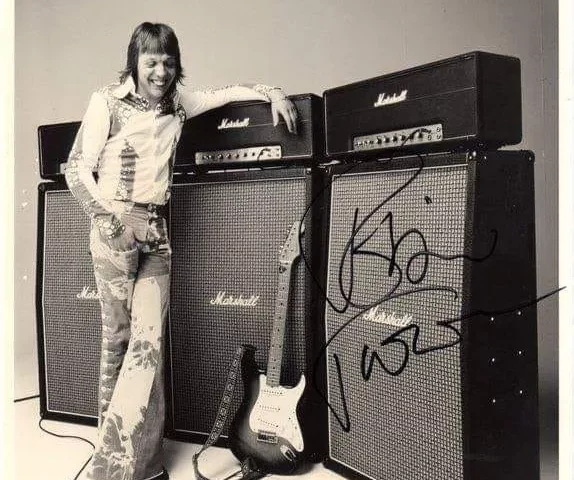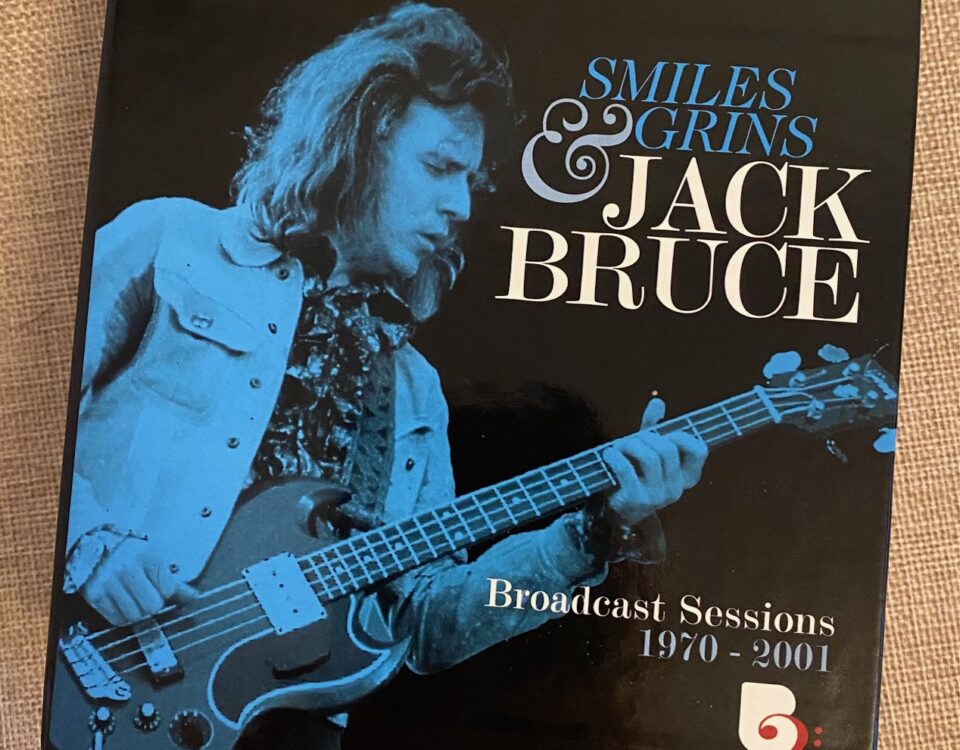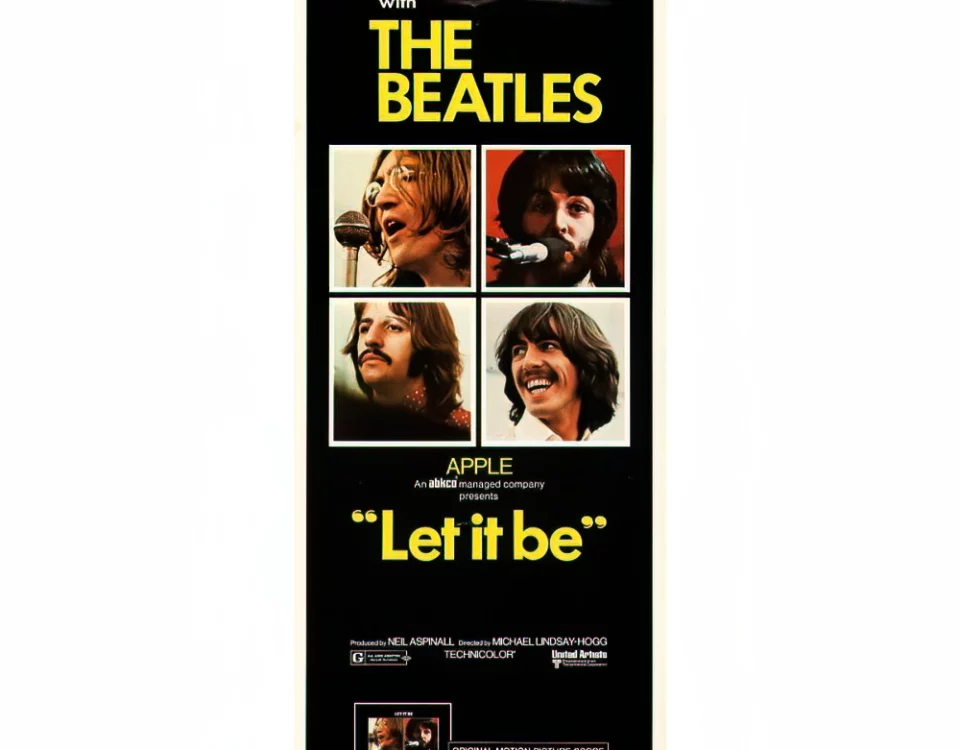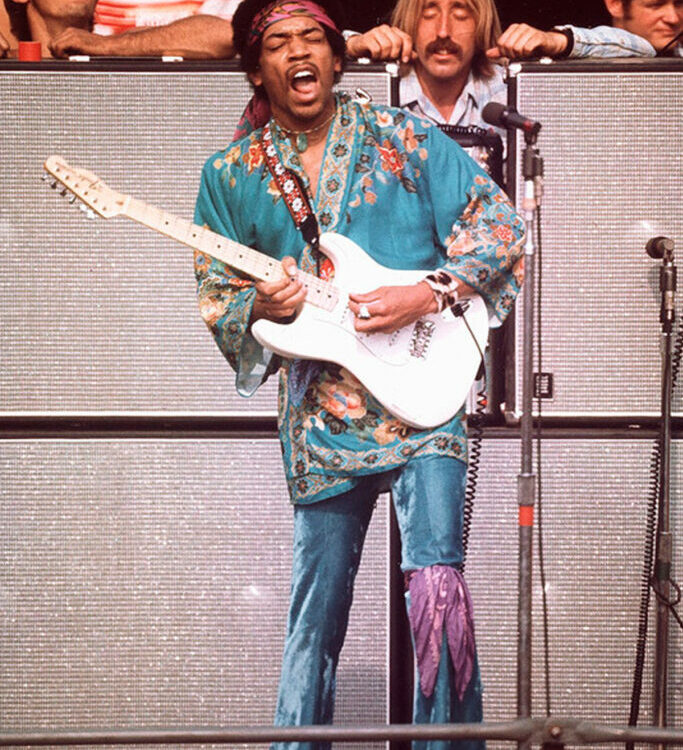Still Crossing the Bridge of Sighs
It was the summer of 1973 that I become a dedicated follower of the brilliant British guitarist Robin Trower. Those long-ago months were spent under harsh conditions as a dishwasher at a Hassidic Jewish summer camp (long story, there).
One of the few things keeping two friends and me sane those long hot days and nights were occasional forays from our quarters near New Patz, New York into what comparatively seemed a grand metropolis: Poughkeepsie. OK, it wasn’t Manhattan, but it had the kind of sanctuary we desperately needed: record stores.
On the same day that I bought the ground-breaking debut album from Roxy Music, I also impulsively opted for an album with a title as spacey as its cover: Twice Removed from Yesterday, by Robin Trower. Covers played a major role in album purchase decisions at the time, with the music within the grooves often an unheard mystery in advance of money changing hands.
Trower himself was not an unknown quantity. I’d long been a fan of Procol Harum, including the handful of years Trower had played guitar for the group. And seeing that Twice Removed from Yesterday was produced by Matthew Fisher – also an ex-Procol member and the musician whose stately organ characterized the worldwide hit “A Whiter Shade of Pale” – led to my conclusion that this solo Trower debut might well be constructed on grand semi-classical foundations.
Wrong.
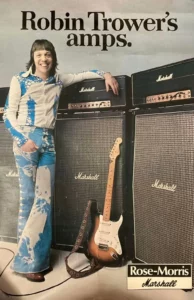
Tools of the trade circa 1974 – and Robin Trower made expert use of every bit of the volume potential seen here. Photo: Marshall Amplification
What emerged from the speakers was a beautiful outpouring of guitar, hazy and nearly hallucinogenic yet earthy and urgent, all at the same time. And Trower’s two bandmates were essential to this unique mix. James Dewar was an accomplished bassist who’d held down the bottom with a band smart fans of European rock knew well, Scotland’s Stone the Crows. Meanwhile drummer Reg Isadore had an expansive style, displaying his expertise at setting up changes while allowing the music to blossom. And riding over it all there was Dewar’s remarkably expressive vocal approach, exquisitely soulful in his delivery.
This was a unique band from the start.
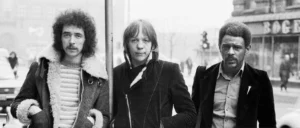
Bassist and lead vocalist James Dewar, Robin Trower, drummer Reg Isadore on tour in Europe circa 1974. Photo: Jorgen Angel
Less than nine months after my first hearing this trio, their second album emerged in April 1974. Its title was no less evocative than the debut album: Bridge of Sighs. And the new record was packaged in one of two shades of eye-baffling mobius artwork depending on your global market of residence.
The evolution in Trower’s trio was apparent and obvious on every level, from song construction to performance. And the reception afforded to Bridge of Sighs was simply the first step on the album’s journey to being recognized as one of the most significant rock albums of all time. Production on this album was again by Matthew Fisher, teamed with former Beatles engineer Geoff Emerick, who was initiating a long alliance with Trower here and albums to come.
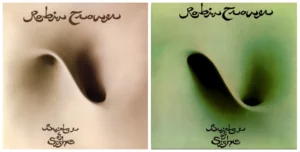
The original UK (left) and US album covers for Bridge of Sighs. Why the variations? The answer to that is lost in the passage of long misty days… Photo: Chrysalis Records
The title track alone made a clear case for greatness. Emerick’s masterful technical approach to recording gave the sound of Trower’s Fender Stratocasters through Marshall amplification a nearly three-dimensional quality, with a sense of motion cast by back-and-forth dreaminess emanating from Trower’s UniVibe pedal. Pushing his Marshalls hard, Trower had nearly endless sustain, but when desired he could also back off his instrument volume control and allow a chiming clarity to emerge, all serving as a foundation for this ominous, all-ahead-dead-slow masterpiece.
The song “Bridge of Sighs” also clearly cemented Dewar’s status as a vocalist. His delivery bears a desperate power that matches the dark dread of the lyrics: “Cold wind blows, the gods look down in anger on this poor child…”
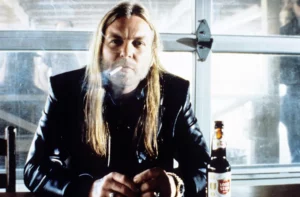
The malevolent Will Gaines – brought to life by Gregg Allman in the rural-Texas-in-the-‘70s drug mob film Rush – is chillingly introduced by the soundtrack’s use of “Bridge of Sighs.” Photo: The Zanuck Company
It was an iconic and harrowing performance, one that years later served as a sonic introduction to the ruthless and murderous rural drug kingpin played by Gregg Allman in the film Rush. That it was accompanied on this album by a host of tracks of similar strength – the surging “Day of the Eagle” and the chillingly beautiful “In This Place,” among others – accounts for this album’s exalted status.
50 years later, the enduring strength of Bridge of Sighs is reflected by two significant releases in 2024.
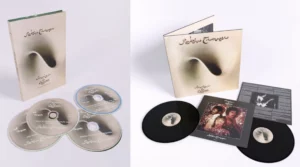
The 50th anniversary CD and vinyl editions of Bridge of Sighs. Photo: Chrysalis Records
The first is a double-vinyl release. While the second album’s presentation of a 1974 radio concert from the Record Pant in Sausalito, California, is noteworthy and an accurate portrait of the Robin Trower band live in this era, it is the first album that is most remarkable.
The eight songs appear here in a studio guise which is both familiar and unexpected. Several of the songs have extended endings, songs which on the familiar Bridge of Sighs simply fade out to silence. On this new release, the band can be heard playing as they did while recording until they simply come to a stop. These structural differences are enhanced by a wealth of unheard guitar parts from Trower, overdubs that may not have been heard prominently in the album’s final mix, if used at all.
It’s almost as if Trower had said to Emerick, “OK, we’ve recorded every note we’re going to need. Can you give me an astonishing sounding rough mix? One where we can hear every note recorded and every vocal committed to tape, and we’ll use that to start thinking about crafting a final mix…” The credit for this 2024 mix goes to engineer Richard Whittaker, and it does indeed sound astonishing.
But this vinyl release amounts to just the first steps across Bridge of Sighs 2024, as it’s joined by an expansive three-CD and single Blu-Ray book-bound box set that gathers all of the vinyl material and supplements it with so much more. The original final mix of Bridge of Sighs appears in remastered form, joined by more than a dozen rarities, not to mention a Dolby Atmos mix joining various 5.1-surround and stereo content. And did I mention the 2024 instrumental mix? Yes, that’s here, too.
The groundbreaking Bridge of Sighs became the bedrock of Robin Trower’s multi-decade career, one which extends to his recent recordings as a solo leader on No More Worlds to Conquer and as a collaborator with singer Sari Schorr, Joyful Sky.
I’ve now seen Robin Trower dozens of times along the East Coast, and in 2018 even drove from New Jersey to Chicago when Trower’s touring that year was focused on the Midwest and West Coast. I had tickets for three shows among his planned United States tour dates in 2024, before news came that Robin required significant medical treatment that understandably takes precedence over concert performances.
Still, the better I’ve become as a guitarist myself, and the more I understand approaches to the instrument, the more I’ve come to appreciate Robin’s music and his instrumental gifts. And while waiting for his eventual return to music creation, this wealth of Bridge of Sighs content will keep the fires burning admirably.

